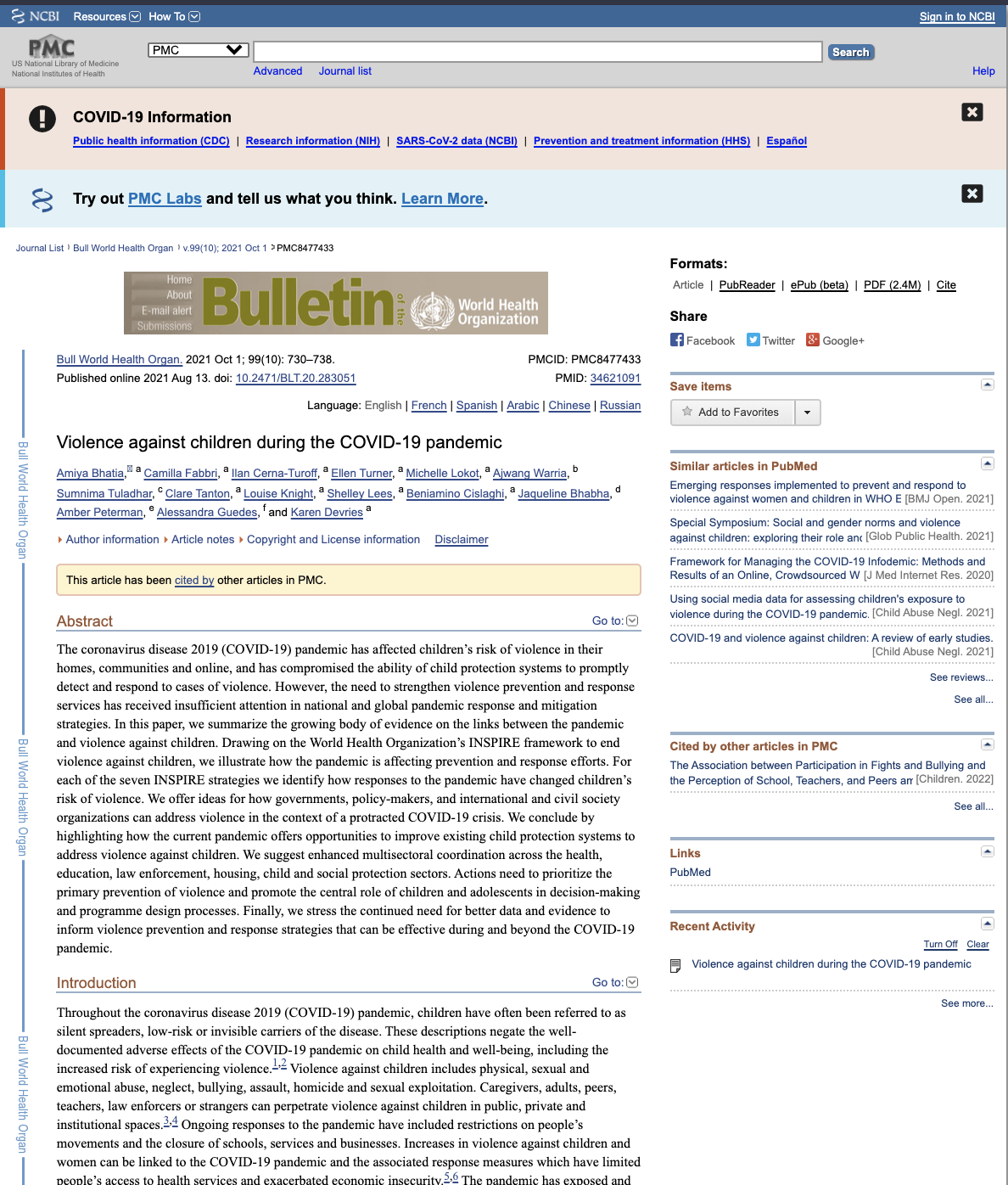Abstract
The coronavirus disease 2019 (COVID-19) pandemic has affected children’s risk of violence in their homes, communities and online, and has compromised the ability of child protection systems to promptly detect and respond to cases of violence. However, the need to strengthen violence prevention and response services has received insufficient attention in national and global pandemic response and mitigation strategies. In this paper, we summarize the growing body of evidence on the links between the pandemic and violence against children. Drawing on the World Health Organization’s INSPIRE framework to end violence against children, we illustrate how the pandemic is affecting prevention and response efforts. For each of the seven INSPIRE strategies we identify how responses to the pandemic have changed children’s risk of violence. We offer ideas for how governments, policy-makers, and international and civil society organizations can address violence in the context of a protracted COVID-19 crisis. We conclude by highlighting how the current pandemic offers opportunities to improve existing child protection systems to address violence against children. We suggest enhanced multisectoral coordination across the health, education, law enforcement, housing, child and social protection sectors. Actions need to prioritize the primary prevention of violence and promote the central role of children and adolescents in decision-making and programme design processes. Finally, we stress the continued need for better data and evidence to inform violence prevention and response strategies that can be effective during and beyond the COVID-19 pandemic.
Introduction
Throughout the coronavirus disease 2019 (COVID-19) pandemic, children have often been referred to as silent spreaders, low-risk or invisible carriers of the disease. These descriptions negate the well-documented adverse effects of the COVID-19 pandemic on child health and well-being, including the increased risk of experiencing violence. Violence against children includes physical, sexual and emotional abuse, neglect, bullying, assault, homicide and sexual exploitation. Caregivers, adults, peers, teachers, law enforcers or strangers can perpetrate violence against children in public, private and institutional spaces. Ongoing responses to the pandemic have included restrictions on people’s movements and the closure of schools, services and businesses. Increases in violence against children and women can be linked to the COVID-19 pandemic and the associated response measures which have limited people’s access to health services and exacerbated economic insecurity. The pandemic has exposed and entrenched pre-existing social inequities in the prevalence of violence against children, and has highlighted important shortcomings in global and national violence prevention and response efforts. Evidence from past epidemics also indicates an increased risk of violence against children, affirming the important role that child safeguarding should play during, and beyond, protracted crises. Although the pandemic has drawn global attention to violence against women and children, prevention and response efforts continue to be underfunded and have received insufficient attention in COVID-19 strategies developed by governments and global organizations.
Violence against children during the COVID-19 pandemic Amiya Bhatia, Camilla Fabbri, Ilan Cerna-Turoff, Ellen Turner, Michelle Lokot, Ajwang Warria, Sumnima Tuladhar, Clare Tanton, Louise Knight, Shelley Lees, Beniamino Cislaghi, Jaqueline Bhabha, Amber Peterman, Alessandra Guedes, Karen Devries, Bull World Health Organ. 2021 Oct 1; 99(10): 730–738. Published online 2021 Aug 13. doi: 10.2471/BLT.20.283051






